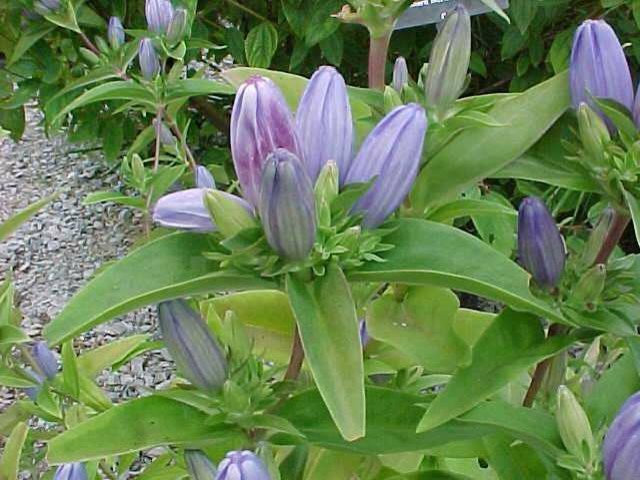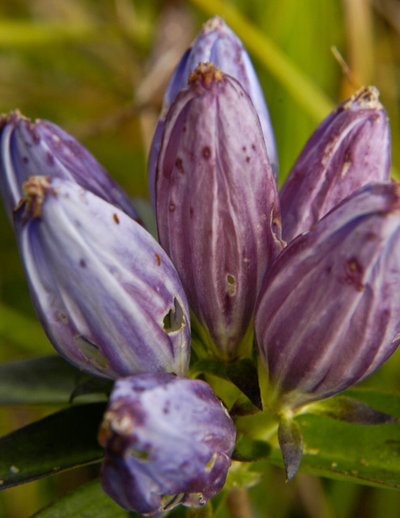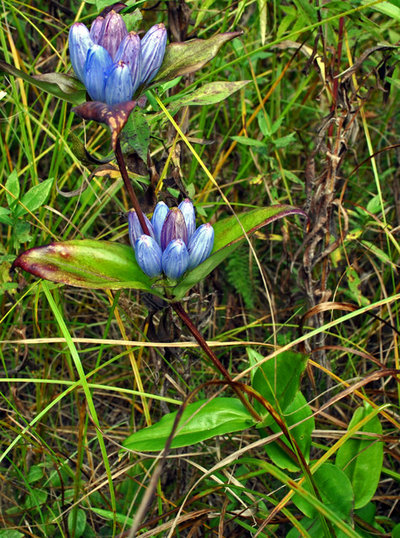With blooms that never open, closed bottle gentian (
Gentiana andrewsii) is about as different as they come. And those blooms can come in a range of hues, from reddish purple to mauve to dark blue — sometimes in stages as the flower fades, sometimes among separate flowers on the same plant blooming at once. In the wild, closed bottle gentian is found in rich woodlands or forest edges, as well as along sunny, open ponds or streams and tends to be long lived if it’s in the right spot. The soil should drain moderately well but not too well — so a loam or clay-loam would work fine. Grazing animals tend to ignore it, so drought is a nemesis more than anything else. It’s certainly a unique plant and worth giving a try at least once.

Missouri Botanical Garden
Botanical name: Gentiana andrewsiiCommon names: Closed gentian, closed bottle gentian
Origin: Native from Nebraska to North Dakota, east through Minnesota and Missouri, on into the Midwest and New England
Where it will grow: Hardy to -40 degrees Fahrenheit (USDA zones 3 to 8; find your zone)
Water requirement: Moist to medium soil that’s moderately well draining
Light requirement: Full sun to half shade
Mature size: 1 foot to 2 feet tall and wide
Benefits and tolerances: Unique blooms; tolerates damp soil; long lived once established
Seasonal interest: Blooms in late summer to midfall
When to plant: Potted or bare-root plants can be planted from spring to fall; it’s not recommended to grow it from seed, since germination is tricky.

Frank Mayfield
Distinguishing traits. Well, obviously its clasped blooms are a distinguishing trait. (It’s like they refuse to speak while being interrogated.) About the only insects you’ll see pollinating it are the beefy and muscular bumblebees — and it’s quite fun watching them at work. The plants can flop a bit, so place them near sturdy neighbors that serve as supports.
How to use it. A consistently moist but not soggy soil that’s fertile is key. In full sun it will need more moisture than in half-shade to mostly shady conditions. Whatever you do, don’t let the soil dry out. Try massing it for an interesting display in the late-summer and fall garden for best effect, as single specimens can get lost in the crowd.
 Planting notes.
Planting notes. Divide mature crowns in early spring or fall for transplanting. It’s best to buy established nursery plants, since seed germination can be tricky and seedling failure rates are a bit high.
Photo by Aaron CarlsonLearn more about gardening with native plants in your area





